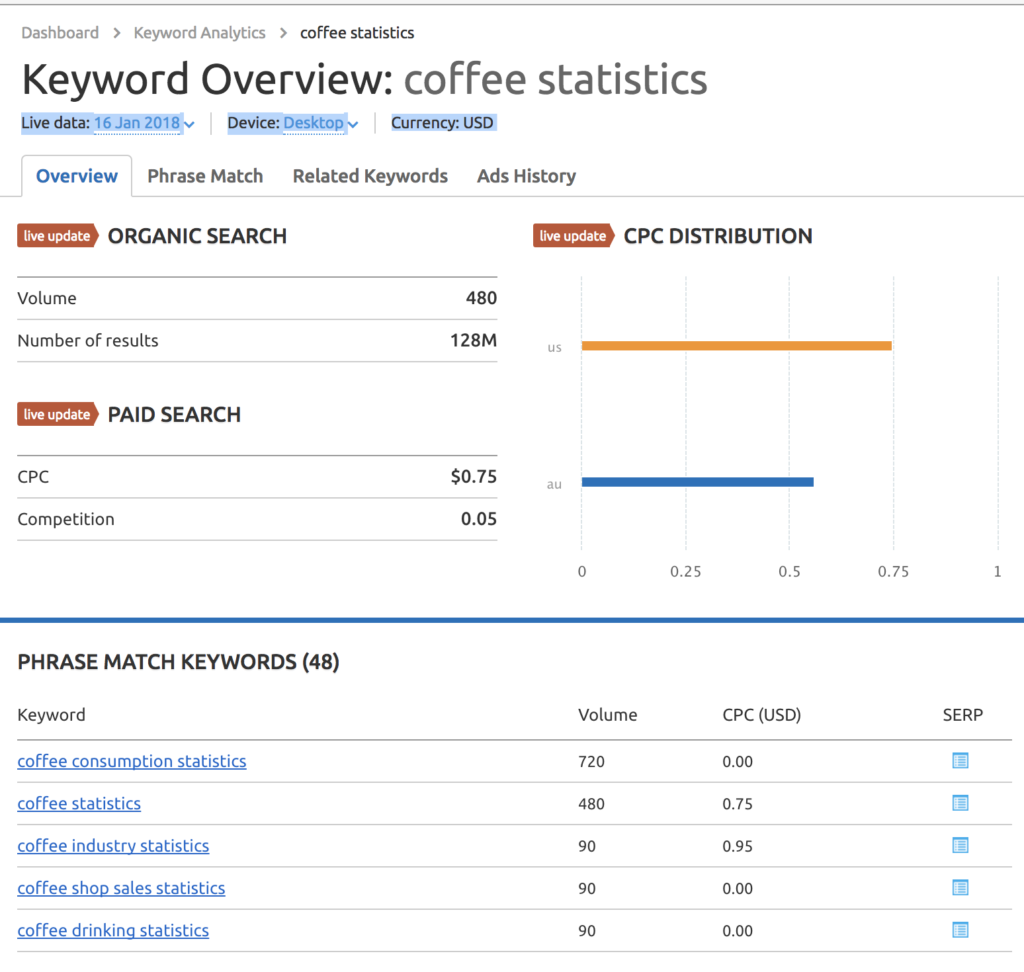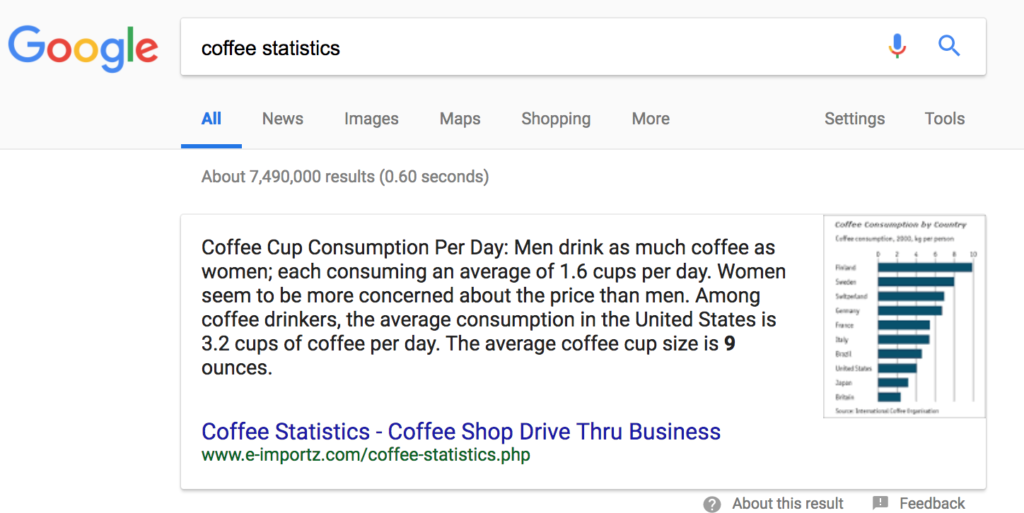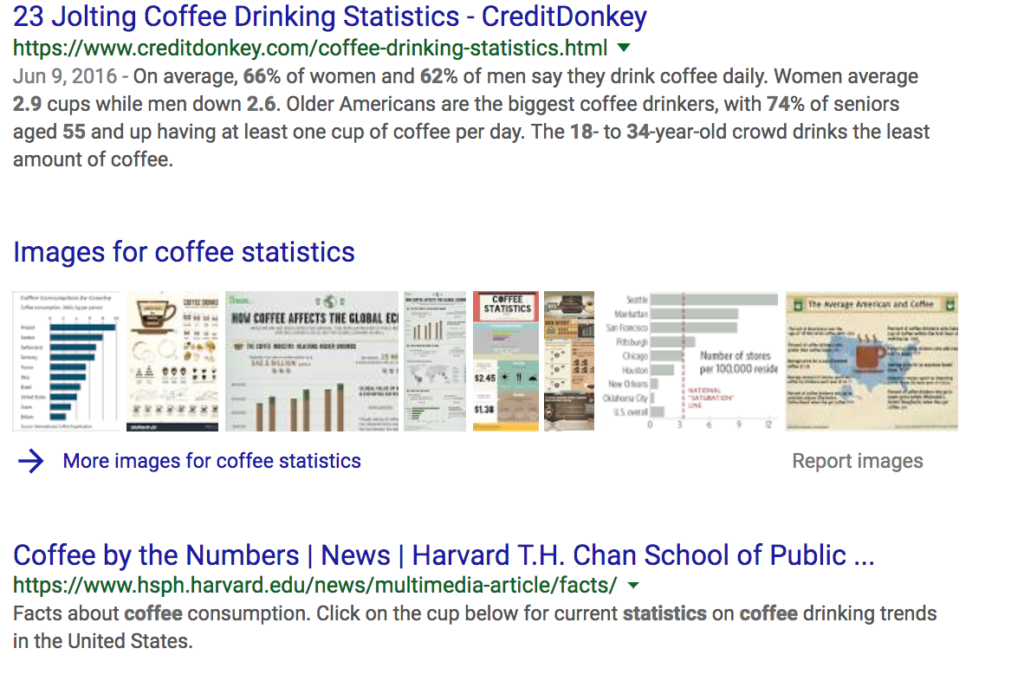
Building your business or blog online is all about getting into your audience’s head. Knowing what and how they think makes your job as a marketer that much easier.
Content marketing is about writing information on your website to fit the needs and wants of your customers. If you try to create content without having done the necessary keyword research, it’s kind of like trying to drive without a map. You might get lucky and get to the place you need to be eventually, but chances are you’ll run out of gas on the side of the road a few times first.
We want to avoid this, because in our business gas equals money.
What is search intent?
When I first started to understand the power of search intent, I felt like I had solved a Sherlock Holmes mystery.
For those unfamiliar with the topic, search intent refers to the type of result the user hopes to get when they’re searching. Generally, we can classify search intent into a few common types of searches.
When searching for the name of a brand, a user might just want to visit that brand’s website but aren’t sure of the actual web address. That search intent is “navigational” — the user is just trying to get to a place on the web and needs an easy path. Other types of searches include: “informational,” “transactional,” and “commercial” search intents.
By combining your keyword research with search intent, you’ll quickly uncover more relevant keywords (and perhaps, some not worth the trouble) and drive relevant organic traffic.
There is a special type of search intent within the “informational” category that can help supercharge your organic traffic: that’s linking intent.
What is linking intent?
A small group of “informational” searchers are looking for content that they can link to in their own article. These include journalists, students scrambling to find a reference for a paper or people like me, a content marketer looking to support my point with a source.
These searchers, who are looking for statistics, case studies, or reports, can be invaluable assets to your marketing strategy if you keep them in mind during your keyword research.
A large number of links to your website is one of the top, if not the most important, signals to Google that your website is relevant and should appear higher in the rankings. So naturally, link building is a key strategy for SEO.
If you can find a keyword with search volume that also has link intent, you’ve struck gold. Even if some of these special keywords don’t have high search volume, they can end up earning you links passively.
Finding your linkable keywords.
Let’s take an example company and find a linkable keyword that fits their industry.
Say you own a mail-order coffee business. Using a tool like SEMrush, let’s see if there is any search volume for posts about coffee statistics. You’ll find that there’s search volume for a few different types of coffee-related topics.
Start by typing the main keyword into SEMrush: coffee statistics.

The results show that there are 480 searches per month for the phrase “coffee statistics,” and at .05, the competition is low. SEMrush also provides a “phrase match keywords” section, which reveals more specific keywords that we can use to create our piece. Since “coffee consumption statistics” has the largest search volume, 720 searches per month, we can start there.
Other suggested keywords, like “coffee industry statistics” or “coffee shop sales statistics” are still valuable, but should be less of a priority since their search volume is lower.
Next, you’ll want to check the search results on Google to see what is already ranking for this keyword. This will give you a sense of the competition and ideas for how to structure your piece.
Checking the SERP
Consider Google search engine results pages (SERPs) your guiding light for content creation. Google’s algorithms are created to provide the most relevant results for the user. Google is also constantly testing and tracking click data to ensure their results are providing users with the most relevant answers to their queries.
Checking the SERP in Incognito Mode helps filter out results that you might be seeing based on your own browsing history.

For this keyword, you’ll notice one thing we don’t see in the search results is advertising. This reinforces that this is an “informational” search query.
Further down in the SERP, there is also an image carousel. This signifies that users like (and click on) images frequently for this query.

How can you improve?
After you analyze the SERP, evaluate the top-ranking pieces and see what you can do to improve upon them. Just because you have a page with link intent doesn’t mean you will automatically start getting links — your content needs to be a valuable asset to others.
Here are some areas where existing content is commonly in need of improvement that you can look for in ranking pieces:
- Is there outdated information?
- Could you include fresh photos that look better than those featured in ranking pieces?
- Can you build a (more) visually stunning infographic?
- Could you add more or better statistics than the current pieces feature?
Once you’ve created a piece that’s better than your competitors, remember to update it regularly. Keeping your information up-to-date and your page looking great will ensure this asset is something others will want to read, click on, and link to — all positive signals that Google looks for when ranking pages.
If done correctly, people will continue to click, which will drive your piece higher, which can bring more links...which will keep driving your page up the rankings!

